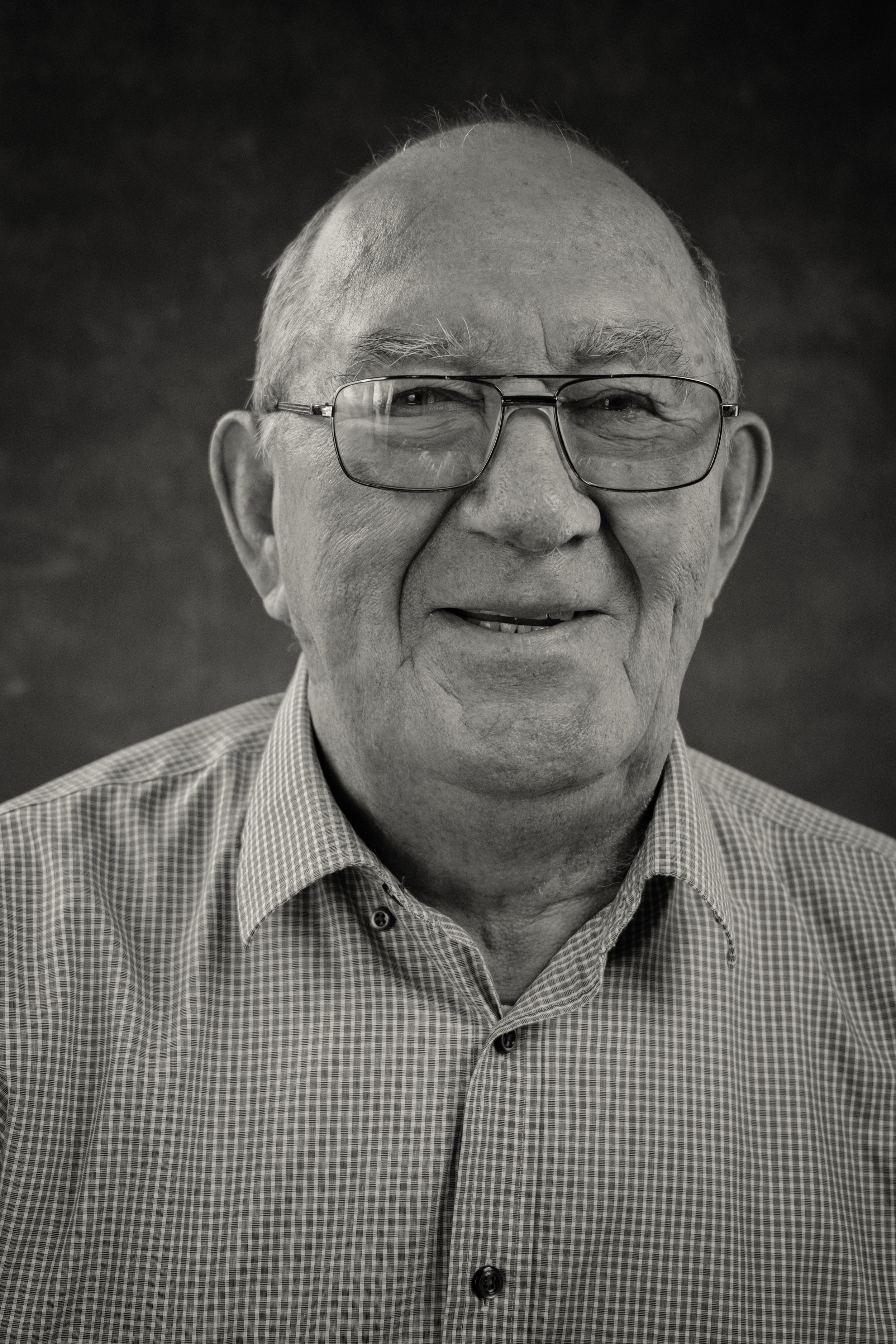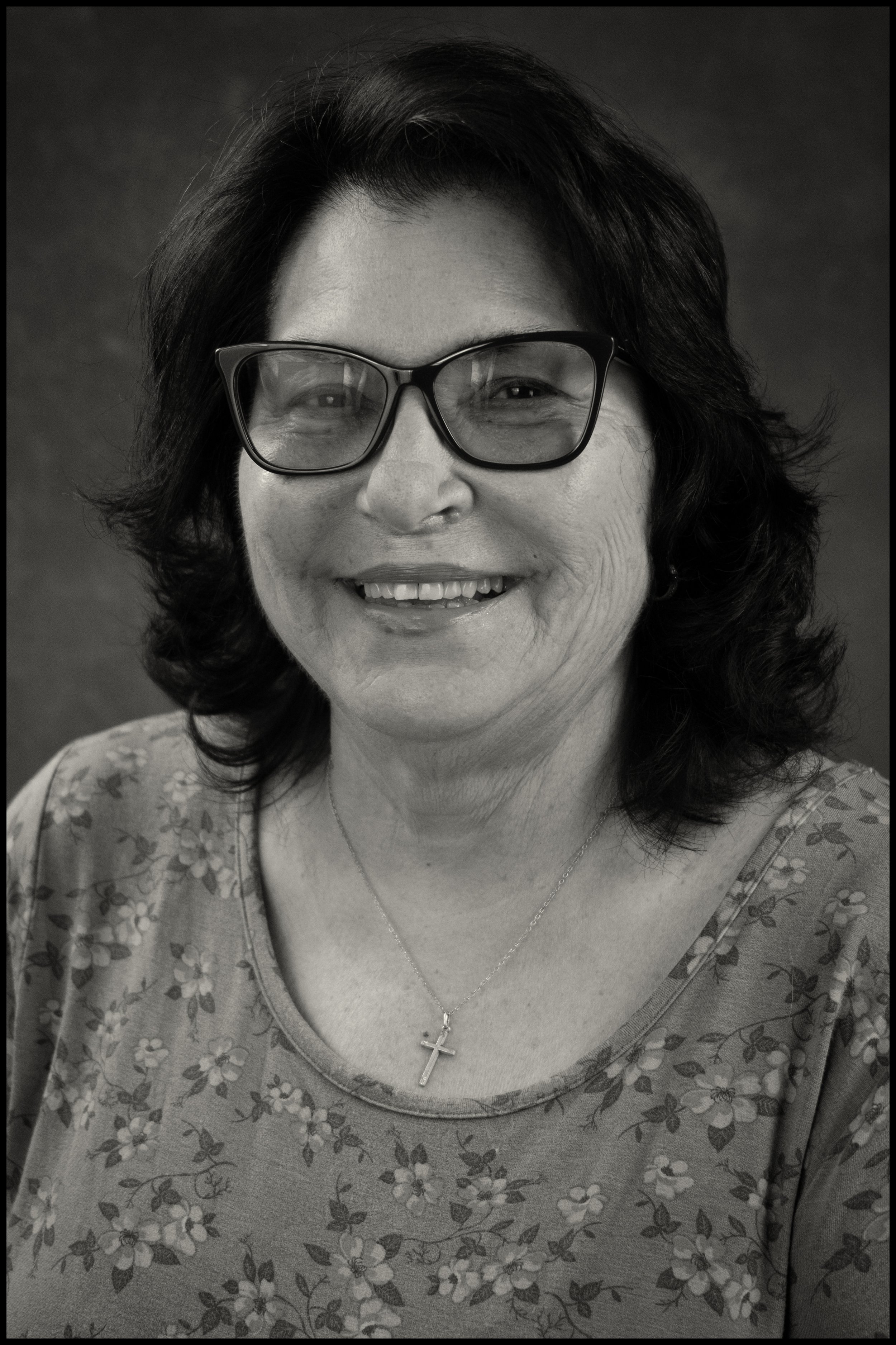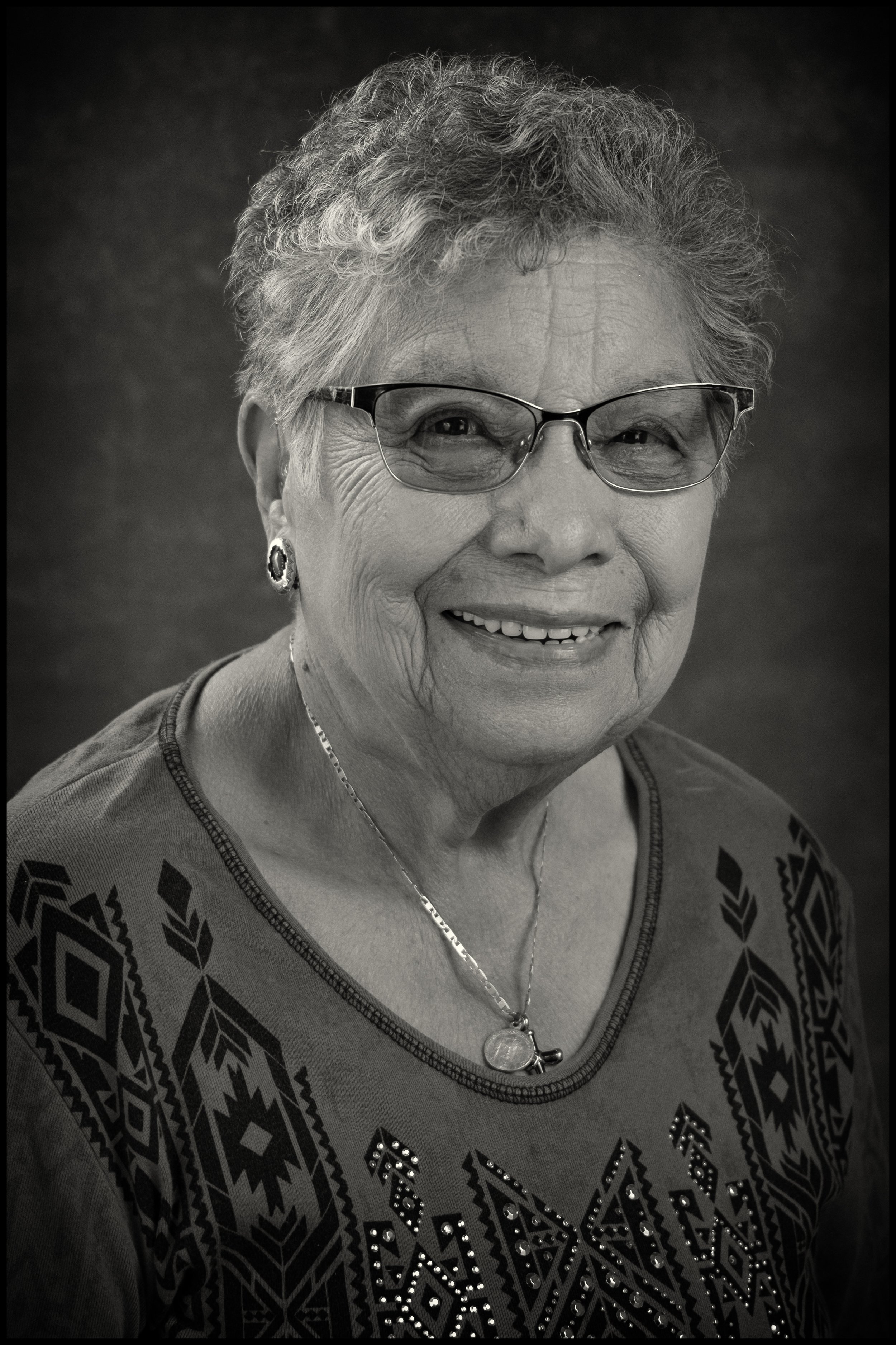STORYTELLERS
Leonard Atonnion Bordeau grew up speaking Kanien'kéha (Mohawk) with his family in Kahnawake and has resided there for most of his life. The first years of his life were spent on the family farm before their land was taken from them for the construction of the St Lawrence Seaway. He has worked as an ironworker in many cities and towns across North America and has also taught Kanien'kéha at both Karonhianónhnha Tsi Ionterihwaienstáhkhwa school and Kahnawake Survival School. He engages with his community and culture through several means, including Powwow dancing since 1996. Atonnion is a well respected elder in Kahnawake and is an active participant in lonkwakáraton / Sharing Our Stories.
Stephen McComber from the Bear clan has always been connected to the land through the practice of gardening and farming. Throughout his life, he has been a seed teacher and is often a keynote speaker at various seed conferences all across Turtle Island, educating people on traditional Kanien'kehá:ka planting practices and cultures. He is a part of the Haudenosaunee Seed Keepers Society with other Kanien'kehá:ka seed savers. He is now the Chief of sustainability at the Mohawk Council of Kahnawake. With this role, he is able to have more power over sustainable and food sovereignty initiatives in and around Kahnawake.
Winston Standup grew up in Kahnawake. During the time the church was in control of the education, he attended Kateri school. Winston is a jack of all trades and a hard worker. While travelling around for work, Winston has always kept Kahnawake as his home no matter how long he was away. Now being married to his wife for over 25 years, Winston shares stories about his time working in New York, helping put in the water and sewer in Kahnawake, his personal experiences, and tales of his rambunctious childhood.
Nick Huard is Mi'kmaq and Wendat, born in Restigouche but has lived in Kahnawake for over 30 years. He was an international journalist who has traveled the world four times over, as he says, mainly covering stories of international conflict and war. He is a prolific artist, who works with various means and has made countless works, including the creation of a giant installation made up of 215 dreamcatchers. He is a residential school survivor from the Jonquière seminary. Nick is currently the resident elder at Université de Montreal and works with the Department of Youth Protection helping guide and support the kids there.
Watsenni:ne McComber grew up dancing and performing at the Kahnawake Indian Village. Along with her four siblings, Watsenni:ne help sustain the family business her grandfather Chief Poking Fire started in 1936. In her teens, she won first place in the Quebec Indian Princess Pageant. Watsenni:ne has always been a hard worker and family oriented, working for over three decades at the Eastern Door. She often shares stories about growing up in Kahnawake, culture, tradition and family.
Joe Jacobs is a family man who built his own home in Kahnawake and raised his family in it. Joe works hard to keep a strong relationship with his culture and is always ready to go when there is a calling. Joe shares his experiences of attending Indian Day School in Kahnawake and how he hopes to see the language come back into the community. His love for the future generation encourages him to continue telling his stories and advancing the historical significance of the Mohawk language and culture.
Peggy Mayo-Standup is an active member of her community in Kahnawake. She grew up there and has always been engaged with community events and groups. Beginning at 10 years old, Peggy started working to help support her family and hasn't stopped since. She has been the president on several boards throughout her life including the Golden Age Club and the Kahnawake radio station, K103. Her studies in legal and secretarial studies led her to becoming the first female native court worker in the province of Quebec in 1980-1986. She was also an elected official of the Mohawk Council of Kahnawake from 1990-2012, covering many portfolios including fiscal, administration and justice. She currently resides in Kahnawake with her husband of 25 years and is an active participant of lonkwaká:raton/Sharing Our Stories.
Mitch Deer was born in the Bronx in New York City in 1955. Although he was distant from his culture growing up, he became inspired by the Ganienkeh land claims in the 1970s and moved there to learn more about himself and his people. Mitch joined the Warrior Society and was a Mohawk Warrior in the 1990 Siege of Kanehsatà:ke and has been fighting for the rights of the Haudenosaunee confederacy ever since. He is very involved in Longhouse traditions and is an integral part of the Kahnawake community.
June Mayo has always been a free spirit. Born and raised in Kahnawake, she has always been involved with community events. Her love for lacrosse and family has help strengthen her values here. June's stories are usually oriented around raising her daughters, reminiscing about her time with her husband, and reminding everyone to never stop dancing.
Joe Deom aided in bringing education back into the hands of Kahnawake. Joe has also been involved in indigenous issues, including negotiations and reporting during the Siege of Kanehsatake in 1990. Growing up in Brooklyn, Joe now resides in Kahnawake and has been sharing the stories about his participants in making Kahnawake a better place.
Katsi’tsakwas Ellen Gabriel is a prominent Kanien’kehá:ka activist, artist, and educator, and has dedicated her life to advocating for Indigenous rights and environmental justice. Born in 1959 and raised in Kanehsatà:ke, Quebec, she gained national attention during the Siege of Kanehsatà:ke in 1990, serving as a spokesperson for her community. She has since become a steadfast advocate for the protection of Indigenous lands, languages, and cultural heritage. She has worked with various organizations, including the Quebec Native Women’s Association, and participated in international forums such as the United Nations Permanent Forum on Indigenous Issues. Her work extends to art, where she uses her talents to educate and inspire through exhibitions and workshops.

Joe McGregor grew up on a farm in Kahnawake in the 20th century with his family close by. He was taught by his grandmother at a young age how to work with traditional medicines and his father taught him traditional healing practices. Because of this, Joe has worked with medicine for most of his life. He is a first language Kanien'kéha speaker and shared that with others through co-hosting the "All-Kanien'kéha Wednesday Talkshow" on Kahnawake's K103.7 radio station. He is a beloved elder and will often give presentations and perform the Ohén:ton Karihwatéhkwen with his wife, Amelia McGregor.
Geraldine Standup has always put her culture first. Hailing from Kahnawake, she was one of the first Mohawk teachers to teach in Chateauguay at Howard S. Billings Regional high school and later found herself helping create the curriculum at Kahnawake Survival School. While growing up on the reserve she always made sure to put her language first. Later in life she became a spiritual healer and travelled to different places in Canada helping other Indigenous peoples, especially during The Siege of Kanehsatake in 1990. Geraldine's stories are usually centered around helping people in mind, body, and spirit, while also giving readers a glimpse into her personal experiences and understandings of what the Creator sent her here to do.
Kevin Ka'nahsóhon Deer is a faithkeeper at the Mohawk Trail Longhouse and helps in performing Longhouse ceremonies, songs and traditions. He was born in Kahnawake and has worked in the community's education system, including at Karonhianónhnha Tsi Ionterihwaienstáhkhwa school, for a significant period of his life. He has a wide knowledge base of Kanien'keha:ka worldviews, history, treaties and philosophies. He has spoken at many international conferences on subjects he is passionate about, including Indigenous spiritual revitilization, Kanien'kéha language replanting and climate action, amongst many others.
Kaia'titáhkhe Jacobs has been an integral force towards Kanien’kéha language revitalization efforts in Kahnawake and surrounding communities, along with bringing education back into the hands of the community. Originally from Akwesasne, she moved to Kahnawake where she started her family. In 1973, she enrolled in the Teacher Training Program offered by the University of Quebec at Chicoutimi. Kaia’titáhkhe later taught Kanien’kéha at Kateri School and at Karonhianónhnha in 1972 and later become the school’s principal, instilling important policies such as ones that supported the Diabetes Prevention Program. On top of this, she has also been a a McGill University adjunct professor. She raised four children and now has numerous grandchildren and great-grandchildren.
Amelia McGregor is an esteemed elder in Kahnawake and a strong matriarch of her family, raising three generations of children, grandchildren and great-grandchildren. She is one of the founding members of the Kahnawake Schools Diabetes Prevention Program in 1994. Through her knowledge of culture and tradition, Amelia has often traveled to places to give presentations on culture or to perform the Ohén:ton Karihwatéhkwen. Amelia speaks fluent Kanien’kéha and raises the next generations speaking their language.
Elaine Delaronde has been sharing stories with lonkwaka:raton since its inception. Her stories often revolve around traditional Kanien'kehá:ka medicine and how to heal one's body and mind through what can be found in nature, all around us. She values and nurtures all that gives us life and encourages others to do the same.
Eileen Niioie:ren Patton's roots come from Kahnawake. While growing up in Michigan, her family would come back home to Kahnawake every summer. Niioie:ren has always allowed her ancestors to echo through her and guide her on her life journey. She commonly performs the Ohén:ton Karihwatéhkwen for various ceremonies, conferences and meetings. She has partnered with institutions such as Dawson College, providing cultural awareness training and giving talks on the history of Kahnawake. Currently, Niioie:ren and her husband Charlie Otsi'tsaken:ra Patton run the popular Patton’s Glen Par-3 Golf Club in Kahnawake. Her stories are compiled of her childhood memories in Kahnawake, the Seaway’s impacts on the community, spirituality, and being proud of who she is and where she comes from.
Kateri Deer grew up on a farm in Cornall Island on the Akwesasne Reserve. When she got older, she moved to Kahnawake and has been a leader in language retention as a first language speaker. She is involved with teaching and guiding learning at Kanien’kéha Ratiwennahní:rats, the two-year Adult Language Immersion Program. Aside from her work with the language, she was a powwow dancer for a large part of her life.
Patrick Cross’ youth was full of adventures with his brothers. Whether it was canoeing down the Saint Lawrence River, hunting moose up north, catching rats down by the water, or snaring rabbits before school, Patrick and his brothers were always up to something. Patrick moved from Kahnawà:ke down to New Hampshire to ironwork at first, but later found himself working in the telecommunications industry. Patrick eventually came back to Kahnawà:ke to stay. He often talks about what Kahnawà:ke was like growing up, his real-life experiences, and the bond between siblings.
A huge thank you to volunteer photographer Martin Akwiranoron Loft for the incredible images he took for sharing our stories. Niá:wen!
We are continuing to collect photos of all the elders and knowledge keepers who have contributed to Ionkwaká:raton. Therefore, you will not see all who participate here.




















